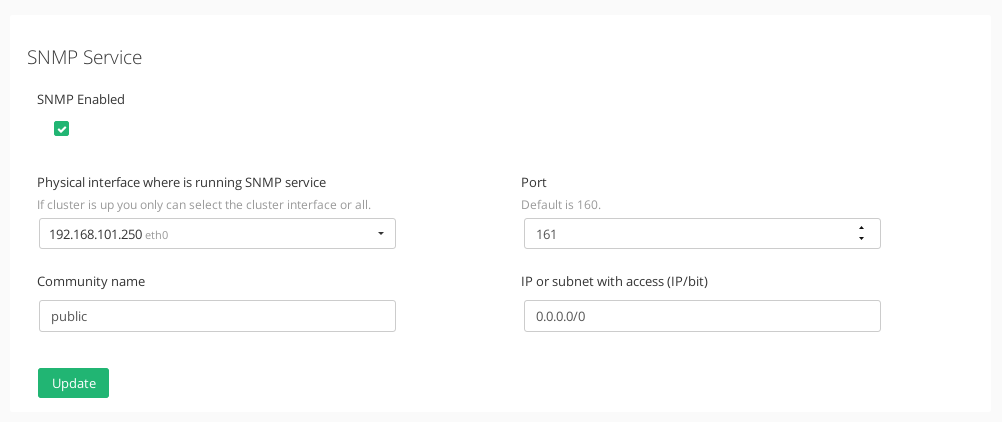The Local Services section manages some local services of the load balancer system like HTTP web GUI service, SSH for maintenance and clustering replication services and SNMP monitoring services.
Every change in this section has to be applied clicking on the Update button.
HTTP service
This service is used for administration and operation purposes as this is the service where the web GUI will be delivered.
Physical interface where is running GUI service. This is the interface where the web panel service will be bind to among all the physical, bonding or VLAN interfaces configured in the load balancer (virtual and floating interfaces are not recommended).
HTTPS Port where is running GUI service. Port used by the web GUI service for administration and operation purposes. The default value is port 444.
To apply the changes it’s needed to reboot or restart the web GUI service through the following command.
/etc/init.d/cherokee restart
SSH service
This service is used for maintenance and clustering replication purposes as it could be accessed through command line to the load balancer remote console.
Physical interface where is running SSH service. This is the interface where the web panel service will be bind to among all the physical, bonding or VLAN interfaces configured in the load balancer (virtual and floating interfaces are not recommended).
SSH Port where is running SSH service. Port used by SSH service. The default value is port 22.
To apply the changes it’s needed to reboot or restart the SSH service through the following command.
/etc/init.d/ssh restart
SNMP service
This service is used for system and load balancing services monitoring purposes in order to be integrated into a centralized SIEM platform.
SNMP Enabled. Check box to enable or disable the SNMP service. It’ll be disabled by default.
Physical interface where is running SNMP service. Interface where the SNMP service will be running.
Port. Port where the SNMP service will be bind to. By default the port 161 will be used.
Community name. Read only community name to be used. By default, the community name public will be used.
IP or subnet with access (IP/bit). Clients subnets or addresses allowed to access to the SNMP service, in case you want to allow the access only from one IP address please use the netmask bit /32.
The Update button will automatically apply all the changes to the SNMP service.


